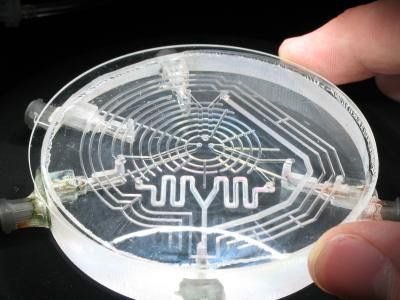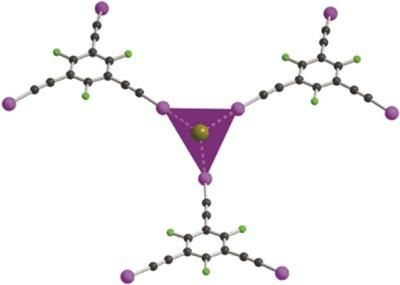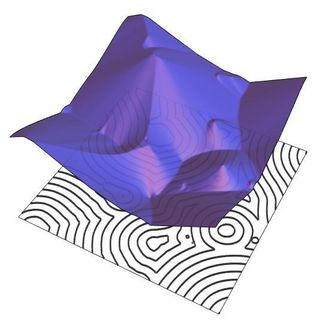Molecules move faster near sticky surfaces
Molecules move faster as they get closer to adhesive surfaces, but this effect is not permanent
molecules move faster as they get closer to adhesive surfaces, but this effect is not permanent. Such is the puzzling conclusion of a study published in Physical Review Letters, carried out by Simone Napolitano and his colleagues in the Laboratory of polymers and Soft Matter Dynamics at the Université libre de Bruxelles.
Since more than 20 years, several researchers have been studying the behaviour of certain polymers, biomolecules, and liquid crystals at the nano-scale near an absorbing medium. In this case we would expect slower movement rates, but the experiments showed the opposite: molecules move faster as they get closer to an adhesive surface. According to the research team of ULB, this odd movement is due to a phenomenon known as the 'nanoconfinement effect': the molecules that are in direct contact with the adhesive surface do move slower, or even not at all, but this in turn increases the movement rate of the next molecules, as they have more free space around them.
Now, writing in PRL, Napolitano and coworkers show that this effect is only temporary: movement rate gradually slows down as new molecules adhere to the surface and fill in the spaces left. After a while, molecules move as if they were far from the adhesive surface. Importantly, the time necessary to return to normal molecular movement rate is longer than what would be predicted by any current theory of polymer physics.
As a result, the researchers propose that the amount of available space at the interface between polymer and sticky wall is an important parameter to control the behaviour of nanomaterials.
Original publication
Other news from the department science
These products might interest you

Spinsolve Benchtop NMR by Magritek
Spinsolve Benchtop NMR
Spinsolve is a revolutionary multinuclear NMR spectrometer that provides the best performance

Eclipse by Wyatt Technology
FFF-MALS system for separation and characterization of macromolecules and nanoparticles
The latest and most innovative FFF system designed for highest usability, robustness and data quality

HYPERION II by Bruker
FT-IR and IR laser imaging (QCL) microscope for research and development
Analyze macroscopic samples with microscopic resolution (5 µm) in seconds

Get the chemical industry in your inbox
By submitting this form you agree that LUMITOS AG will send you the newsletter(s) selected above by email. Your data will not be passed on to third parties. Your data will be stored and processed in accordance with our data protection regulations. LUMITOS may contact you by email for the purpose of advertising or market and opinion surveys. You can revoke your consent at any time without giving reasons to LUMITOS AG, Ernst-Augustin-Str. 2, 12489 Berlin, Germany or by e-mail at revoke@lumitos.com with effect for the future. In addition, each email contains a link to unsubscribe from the corresponding newsletter.
Most read news
More news from our other portals
Last viewed contents

'Microfluidic palette' may paint clearer picture of biological processes
Krabbe_disease

Nanocellulose materials by design - Theoretically, nanocellulose could be the next hot supermaterial
Lenzing and Acordis - US Joint Venture
Mitsui Chemicals to License PP Process to Thai Polypropylene
Tripos Completes Acquisition of Optive Research, a Molecular Discovery Software Company
Accelrys Announces Pfizer Inc. as the First Member of the Enterprise Cheminformatics Consortium - Consortium to Drive the Evolution of Enterprise Cheminformatics Systems Using Open and Flexible Service-Oriented Architecture
The buzz on an amazing new mosquito repellent: Will it fly?
Orion sues generic drug companies in the U.S. to enforce patents for entacapone


























































